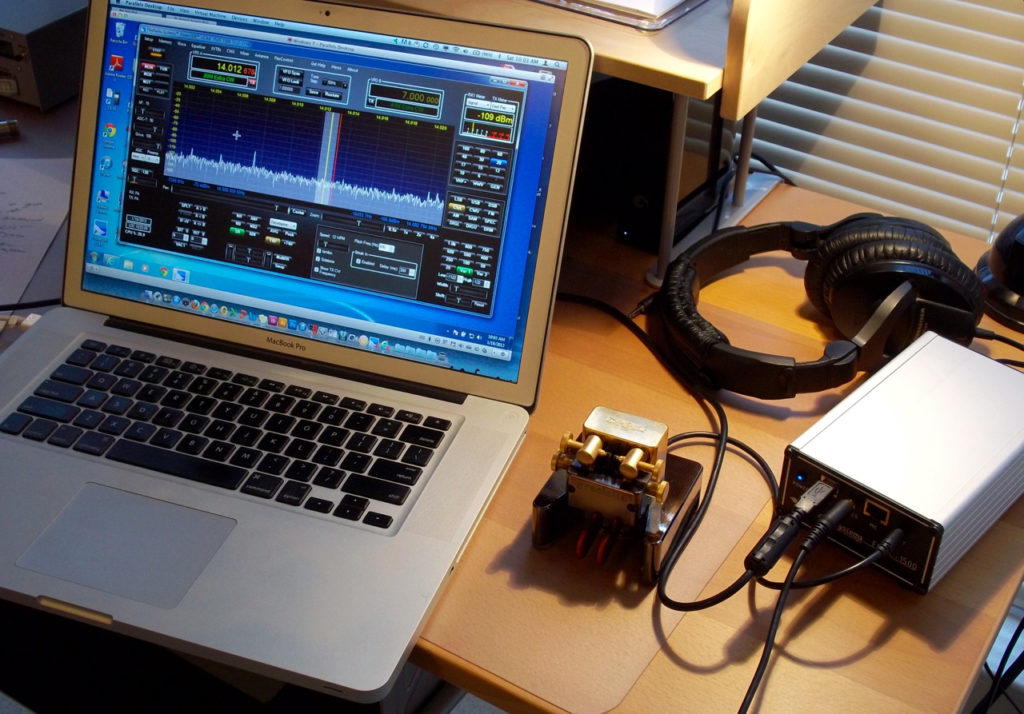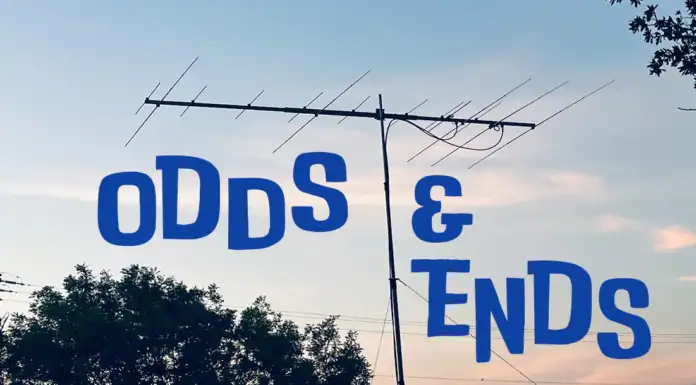If you’ve been keeping up with my posts, you know that last week I won a FlexRadio Systems FLEX-1500 in a drawing at the Lone Star DX Association quarterly meeting. That post is titled Lucky Guy and, indeed, I am a very fortunate guy to win this gem.
After I got the rig home, I started looking over the website determining how best to get it set up. First issue, it operates in Windows only. That’s not the best situation in an all Apple household. Second issue, while Boot Camp on a Mac is supported, vitual machines are not. But after contacting Greg Jurens, K5GJ, of FlexRadio Systems, who was the speaker at the meeting, he noted that he and many others operate with a virtual machine and that the FLEX-1500 was well suited for this approach since it uses a USB connection rather than the Firewire connection for their other rigs.
So today I connected everything to the very compact box and fired it up. For a computer, I used a MacBook Pro running Parallels as the virtual machine with Windows 7. The initial steps are all about getting the software set up, which you’d expect from a software defined radio. All that was pretty straightforward using the software disk that’s supplied with the rig. Then, when you turn on the rig a few more drivers are installed. Here’s a photo of the rig in operation.
I tried CW using my Begali Graciella key, which is close in size to the rig itself. For some reason, the internal keyer didn’t readily connect my ear and key as I had a bit of a problem matching up my fist. But the tuning was great and the visual display really stunning. There were a number of useful features around filtering, etc. Plus, there is a contest window for programming your messages for the function keys. I also connected my NorCal QRP Wattmeter and can verify that the rig can put out 5 watts.
Next I tried the WWV settings where it very handily moves from one frequency to the next (2.5, 5, 10, 15) with the click of a button. I also tried the general coverage bands and listened to some AM broadcasts. It’s a very nifty full-featured receiver and could be fun entering some of the contests in QRP categories or just getting on the air and working QRP. In addition, as Flex points out, it would no doubt work great with transverters for VHF-UHF operation.
For me the next steps in the Windows world that this rig operates in would be to set up a logging program along with a digital modem for RTTY and PSK. Over the past year or so I’ve wrestled with getting a Windows computer just for the ham shack. What’s tempted me along these lines is that it would allow me to put into play all the great sofware that is available for ham radio in that operating system, from N1MM to MMTTY and so on. My latest venture into RTTY makes this an very interesting option and this rig would make one more reason. Still, not really sure I’m ready for that move. Plus, my finances this year are strapped with all the travel, etc. needed around the National Scout Jamboree.
Stay tuned to see what happens going forward — always finding ways to achieve some level of continuous improvement — or is it continuous movement?








Hi Jim, glad you’re liking the Flex 1500 :). Thought that since I’m in the area so to speak that I’d tell you of my experience with the Flex.
I first tried one about a year ago and was also impressed. But then about 6 months ago I sold it because it had a few minor issues which were irritating to me, such as random white noise while receiving that would wipe out incoming signals, and inadequate tx audio muting when using the built-in VAC. Also, the power switch on my unit wouldn’t always latch, and would sometimes pop out and shut the rig down unexpectedly.
I later found out that the white noise etc. is a common problem in early Flex 1500 units, and can be cured with a firmware update. And as luck should have it, I came across a good deal on another 1500 just a few weeks ago so decided to try again because despite the problems I really did miss the pan display, filtering, etc.
This new (to me) Flex 1500 works fantastic :). All of the old problems are gone! And I am using it with the same computer as old – a Dell GX520 1ghz desktop running very stripped down Win XP Pro and dedicated to ham use so it has no other software installed besides ham programs.
The PowerSDR software has gone through a version upgrade since I first tried it, and the new version cures the tx audio muting along with other things.
I use the 1500 to drive an RM Italy HLA-150 amplifier to 100w and it works well and is clean on a spectrum analyzer.
Anyway, I think that the more you use it the more you’ll come to appreciate its features and capabilities. Take care, have fun, and thanks for the great post :).
Darrell,
Thanks so much for your insight into the FLEX-1500. It is amazing what a firmware update can do. I’d venture to say that my Elecraft K3 is nearly an entirely different rig than the one I purchased several years ago! First, due to the continuous improvement and additional features through firmware. Second, due to me figuring out how to use the radio! I’ll bet I find that same thing true with the FLEX-1500.
73, Jim, K5ND